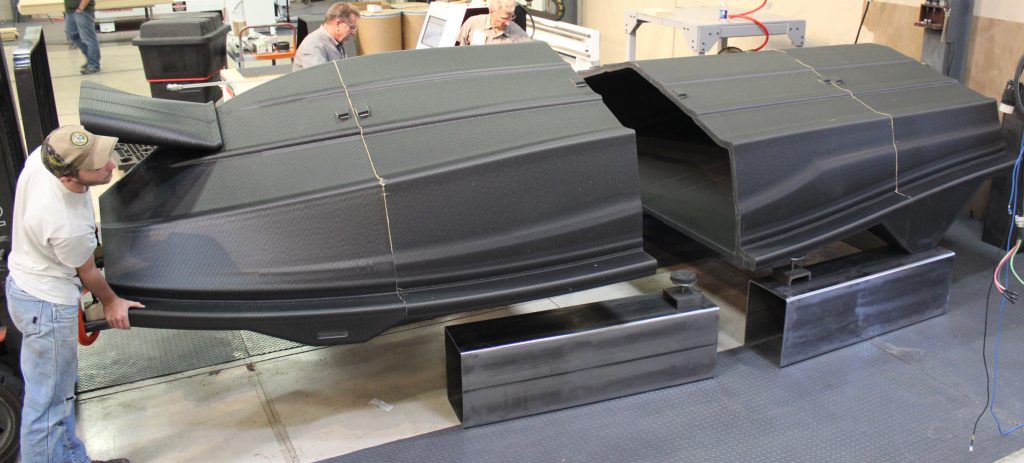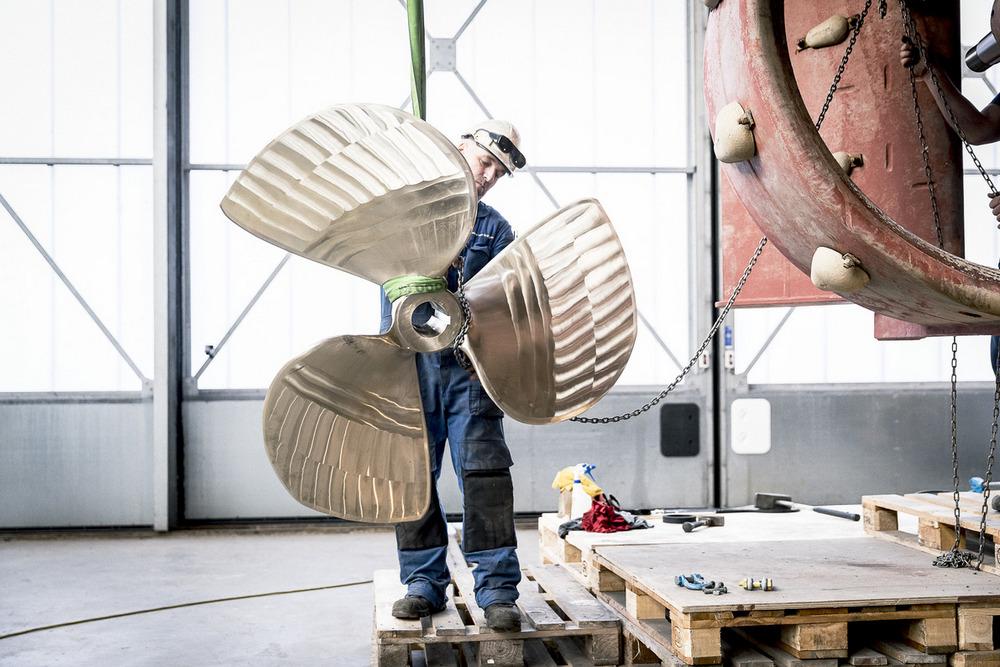In a project spanning two weeks worth of working days, and 30 hours 3D printer time, Indiana’s Thermwood Corporation has completed a 3,000 lb (1,363 kg) pattern for the hull of a fiberglass motorboat.
The watertight design is the product of a collaboration between polymer pigment and engineering firm Techmer PM, and mold specialist Marine Concepts, using Thermwood’s Large-Scale Additive Manufacturing (LSAM) system.
Put together piece by piece
The hull pattern was 3D printed in six sections by the LSAM system. After printing, the parts were put together and machined over the course of 50 hours. With a max worktable measuring 10-by-20ft, the pattern was 3D printed and machined on the LSAM system by switching out the toolhead for a mill.
It was made using Electrafil ABS LT1 3DP feedstock, developed by Techmer PM and suitable for marine tooling applications.

A cost saving solution
The completed pattern was filled with fiberglass to make a complete mold for the hull of of a boat that can be reused. By applying additive manufacturing, the partners significantly reduced the cost of moldmaking for fiberglass applications.
To extend these savings further, Thermwood is investigating LSAM’s potential to directly 3D print the mold itself. Due to the size of boat hull’s the mold will still have to be 3D printed in segments, but it could cut out one extra step in the boatmaking process, and even enable the addition of integrated cooling channels.
Big additive
Earlier in 2017, Thermwood’s LSAM process was used in the making of a large component for Chinook helicopters, believed to be a world first for a mold its kind. Elsewhere, Oak Ridge National Laboratories (ORNL) have a rival Big Area Additive Manufacturing (BAAM) process that has been used to make end-use parts for cars and a Navy submarine.
In the maritime industry, the metal Wire-Arc Additive Manufacturing (WAAM) process has been used to make the deftly deftly named WAAMpeller which has now been unveiled at Damen Shipyards.

To keep up with all the latest trends in additive manufacturing, subscribe to the 3D Printing Industry newsletter, follow us on Twitter, and like us on Facebook.
Get involved with 3D printing events near you here.
Featured image shows machining the 3D printed hull pattern on Thermwood’s LSAM system. Photo via JEC Group



